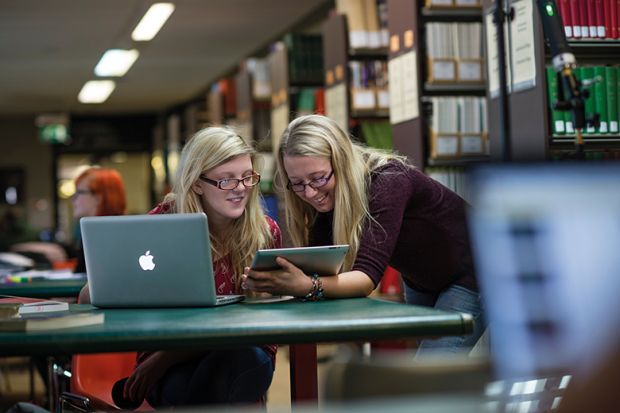A majority of UK students now say they would prefer a mix of on-site and online tuition, according to a major survey which underlines the growing popularity of blended learning.
Despite the drive to get students back into lecture halls as pandemic restrictions eased, 45 per cent of 33,000 students polled by Jisc said keeping some elements of their teaching online was their preferred way to study.
This compared with 42 per cent who said they wanted mainly on-site learning – leaving blended learning as the top choice in the sixth edition of Jisc's annual digital experience insights survey.
In the 2021 survey, while students were not asked about their preferences, 55 per cent of respondents said they expected mainly face-to-face learning, and just 37 per cent expected a blended experience.
Sarah Knight, the company’s head of learning and teaching transformation, higher education, said the results showed more students were beginning to see the value in blended learning techniques.
For this year’s study, students were surveyed between October 2021 and April 2022; a period which, while still marked by Covid-related disruption, began to see a return to in-person teaching across the country.
In January, then education secretary Nadhim Zahawi said that there was “no longer any excuse” to teach remotely, and the government has also threatened providers with fines for continuing with online lectures without justification.
A review of blended learning conducted by the Office for Students was expected to report over the summer, with the regulator set to get tougher on institutions using approaches that it deems falling short of its requirements.
Ms Knight said: “One of the unintended outcomes of the pandemic is that most students now have a better understanding of the potential role of digital technology as a natural component of learning.
“Students’ expectations have changed and continue to evolve. The ability to work online gives students more choice around when, where and how to study. They can better balance study, employment and care commitments; they can reduce accommodation and travel costs and deepen their understanding of their subject independently.”
She stressed, however, that challenges remain, particularly weak wi-fi signals in students’ homes, while some still lack access to devices capable of keeping up with the demands of online study.
The survey – which seeks to help universities understand where they can improve to meet the digital needs of students – also considered what digital investments students would like to see to improve their courses, and how much involvement they would like in making decisions about digital learning.
The full results will be released at the Association of Learning Technology conference (ALT-C), which takes place in Manchester between 6 and 8 September.
POSTSCRIPT:
Print headline: Blended learning is most popular
Register to continue
Why register?
- Registration is free and only takes a moment
- Once registered, you can read 3 articles a month
- Sign up for our newsletter
Subscribe
Or subscribe for unlimited access to:
- Unlimited access to news, views, insights & reviews
- Digital editions
- Digital access to THE’s university and college rankings analysis
Already registered or a current subscriber? Login








